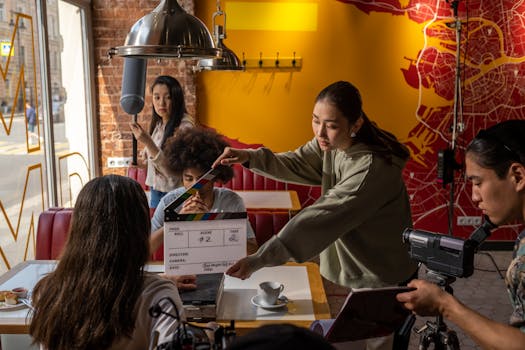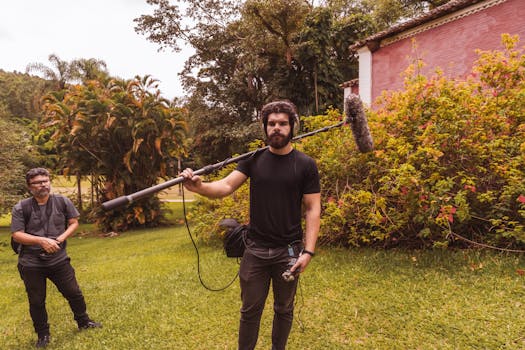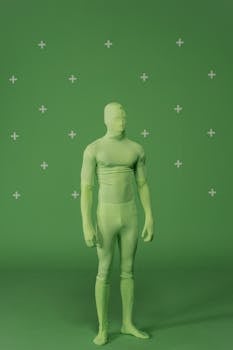Movies
Film Genres Explained: From Noir to New Wave
From noir shadows to New Wave jump cuts discover the unique traits that define each major film genre and deepen your appreciation for cinema with practical tips, storytelling cues, and memorable examples.
Advertisement
Shadowy gumshoes, neon-lit streets, and sudden moral twists—these are just a few of the signposts fans spot when diving into film genres. Loved for their variety, film genres shape our expectations and ignite lifelong debates about what makes cinema unforgettable.
Browsing streaming services or the local theater, viewers encounter a dazzling spectrum of film genres. Each one offers its own storytelling rules, visual cues, and emotional punches for audiences. Understanding these genres reveals layers of meaning in every movie, from classic to contemporary.
This guide unpacks key film genres from the moody edges of noir to the electrifying energy of the New Wave. Read on to discover practical tips, telling details, and straight-up examples for recognizing and appreciating these genres in modern cinema.
Spotting Noir: Classic Signs and Real-Life Viewing Guide
Noir’s visual mood and narrative structure shape the way viewers watch, discuss, and even rewatch these films. Spotting authentic noir film genres becomes easier using clear visual and script-based cues.
Classic noir explodes with sharp shadow design, ambiguous heroes, and quick-fire banter. Whether it’s a detective lighting up in a rainy alley or a femme fatale at the bar, these specific moments signal the genre unmistakably.
Identifying Visual Language in Noir
High-contrast black and white isn’t just a style—it’s the mood. Watch for Venetian blinds slashing through darkness, or characters lurking half out of view. These elements signal a true noir approach without ambiguity.
Actors in noir rarely hold eye contact for long. A detective glances away mid-scene, tension coiling in every movement. If you catch that restless energy on screen, you’re absolutely in noir territory.
Even props tell a story. Notice fedoras, cigarettes, and trench coats—the film genres of noir revolve around consistent costume choices just as much as storylines do. Try observing a menu or newspaper as the camera lingers, hinting at secrets.
Noir Dialogue and Motifs to Listen For
Quick, clipped dialogue drives the pace. Think of a private eye muttering “Every street tells a lie” or a suspect asking, “Why shine a light here?” Film genres thrive on these memorable, loaded exchanges.
Characters trade sharp comebacks, rarely answering questions directly. When a lead shrugs off trouble or dodges small talk with wordplay, the script is honoring a classic noir tradition.
Sound cues reveal genre intent too. Rain tapping against windows, jazz drifting through smoke, and the clack of typewriters immerse the viewer in a noir setting. Listen closely and note how each sound grounds you in the film’s world.
| Film Genre | Key Visual | Typical Dialog Cue | What to Do Next |
|---|---|---|---|
| Noir | High-contrast shadows | Hard-boiled banter | Pause when you spot silhouette shots |
| Musical | Bright costumes | Breaking into song | Notice spontaneous dance numbers |
| New Wave | Jump cuts, handheld camera | Free-flow monologues | Note discontinuous edits |
| Western | Wide open landscapes | Direct, sparse talk | Look for standoffs and slow pans |
| Sci-Fi | Futuristic technology | Speculative speech | Spot visual effects supporting story themes |
Musicals in Action: Experience, Participate, Repeat
Watching musicals becomes interactive once you know film genres’ conventions. By recognizing performance cues and scene structure, viewers can enter each sequence looking for actions that define the musical form.
Each musical scene uses song and dance to communicate feelings or advance a plot. Observing these cues helps moviegoers spot transitions between dialogue and melody that mark the genre’s unique storytelling pace.
Entering Musical Numbers with Confidence
Musical film genres signal major story beats with music. When characters step out of a heated argument and burst into song, you’re witnessing a plot being expressed through melody—treat it as a narrative development.
Costume changes flag a shift in mood. If dresses swirl or suits gleam suddenly, musical rules say we’re entering a new emotional chapter. Try recounting which outfit change triggered your favorite song in a film.
- Join in: Clap along with crowd scenes, and let the rhythm guide your expectations for the next scene shift.
- Spot color schemes: Note when backgrounds become simple or stylized—it’s a cue the music will carry the action now.
- Track transitions: Identify quick dialogue-to-song shifts; that’s a musical director’s signature move.
- Pinpoint group choreography: Watch for synchronized dance numbers as an anchor moment in musical film genres.
- Recall recurring melodies: Listen for a tune repeating—musicals use reprised songs to hint at deeper character realization.
By trying these steps, you’ll engage more actively and remember moments that define musical genres in every movie experience.
Rewatching Musicals: Discovering New Details Each Time
Experienced fans use rewatching as a tool. Counting costume changes or mapping song themes enriches every viewing. Say, “I bet this red scarf means a turning point,” as you revisit a familiar scene—film genres reward repeat attention.
Spot hidden accompaniments: Sometimes a crucial piano chord in the background signals an upcoming reveal. Note the moment and see how it shapes the unfolding drama in real time.
- Catalog dance partners: Make note of who pairs with whom in each sequence—relationships are often reinforced or challenged through choreography.
- Echo the soundtrack: Try humming themes outside of the movie. If the melody sticks, the composer nailed a crucial genre convention.
- Observe space: Musicals play with wide and tight spaces. Mark each transition, as room size signals the importance of emotional content.
- Pause on applause: When the on-screen audience claps, so should you. It’s a built-in invitation to appreciate the performance’s climax.
- Notice props: A recurring flower or cane likely symbolizes a character’s personal arc—mention it out loud next time you watch.
Musicals ask viewers to participate, not just observe. Use these steps to find new angles on beloved musical films—and enrich your understanding of this essential film genre.
French New Wave’s Unconventional Rulebook for Film Lovers
The New Wave doesn’t just break rules—it delights in re-inventing what audiences expect from film genres. Watching these movies means tuning into loose scripts and raw energy, all pushing against conventional cinematic language.
Directors showcase everyday moments, overlapping conversations, and sudden location changes that defy standard storytelling. Following these cues, a viewer can spot New Wave elements instantly and appreciate the creativity behind them.
Jump Cuts and Disruptive Editing
French New Wave introduced jump cuts as more than stylistic flair. Directors would literally cut out seconds of silence or movement, forcing viewers to fill gaps with their own emotions. Try noting where scenes seem to shift abruptly but feel “alive.”
Scenes spill out into city life, not closed sets. When actors blend into crowds, or dialogue drowns in street sounds, the boundary between fiction and reality blurs. Film genres in this mold make even the most ordinary walk a potential story highlight.
Dialogue is conversational, not theatrical. Characters say “I don’t know what comes next,” reflecting real uncertainty. These candid moments break from the neat conclusions you’ll see elsewhere—capture those moments as proof of the genre’s daring.
Viewer Participation in New Wave Films
Audiences have permission to interpret scenes their way. When an actor looks into the camera and shrugs, it’s an invitation: decide for yourself. Film genres like New Wave value participation over passive viewing every time.
Sync narrative mood to your environment: Watch these films with friends and share distinct takes on meaning. If your group reads a close-up differently, that variety is the genre’s central joy—it encourages debate.
Try creating edits of your own. Pause the movie after a jump cut and imagine what would have come before or after. This hands-on exercise deepens an understanding of New Wave aesthetics and brings viewers directly into the genre’s playful spirit.
Westerns and Sci-Fi: Contrasting World-Building Methods
Western and sci-fi film genres construct immersive worlds using opposite rules. Westerns ground their tension in harsh realities and code-based societies, while sci-fi leans into speculative elements and unknown futures.
These genres give audiences unique work to do: Westerns demand you look for moral choices under pressure, and sci-fi pushes viewers to decode new rules and technology. Spotting their conventions sharpens the ability to critique and enjoy any film.
Building Suspense in Westerns
Westerns thrive on silence and timing. When two characters square off, body language tells the real story: a twitch of the jaw, a hand hovering over a holster. Try timing how long these moments last—film genres of this caliber choreograph tension second by second.
Setting dictates action. Wide shots of deserted main streets or mountains signal isolation and risk. Whenever a character pauses at a saloon door, watch for wary glances from inside—visual cues hand you the script on how to read the threat level.
Respect is earned, not assumed. The first time someone tips a hat or stays silent during a confrontation, pay attention. These customs shape every move, influencing viewer loyalties scene by scene.
Sci-Fi’s Playful Rewrites of Reality
Sci-fi films rely on plausible inventions that push plot and ideas. Props like blinking gadgets, unusual vehicles, or coded language serve as the genre’s vocabulary. Spot these clues and match them to a recurring theme: the limits of human knowledge or control.
Non-human characters—aliens, robots, AI—turn normal moral conflicts upside down. Listen for lines like, “My directive prohibits harm,” and observe how both humans and non-humans test rules together. This tension is the engine of sci-fi film genres.
World-building extends to decor and lighting: Neon underfoot or starlit vistas flag you’re in speculative territory. Whenever set design seems otherworldly, pause to ask which real-world issue is being discussed underneath the surface story.
Understanding the Spectrum of Film Genres in Modern Cinema
Noir, musicals, New Wave, westerns, and sci-fi—these film genres offer distinct codes for both filmmakers and audiences. By watching for key visuals, dialogue cues, and story structures, you get closer to the filmmaker’s intent with every viewing experience.
Cinema’s magic often lies in how genres encourage viewers to respond actively and thoughtfully. Appreciating film genres deepens enjoyment, whether you’re streaming a favorite or watching with friends at a theater.
Next time you pick a movie, use these genre strategies to uncover deeper meanings—and share your discoveries. Every genre offers a unique entry point into the worlds filmmakers build, making each screening a richer, more connected adventure.
Trending Topics

How Real Locations Transform Movie Storytelling
Explore movie locations that bring stories alive, enhancing realism, emotion, and atmosphere through genuine visual storytelling.
Keep Reading
How Sound Design Shapes the Emotional Power of Film
See how sound design in film shapes emotion, builds tension, and transforms simple moments into unforgettable cinematic power.
Keep ReadingYou may also like

Why Practical Effects Still Outshine CGI in Film
See why practical effects still surpass CGI, blending craftsmanship and creativity to deliver unmatched cinematic authenticity.
Keep Reading

